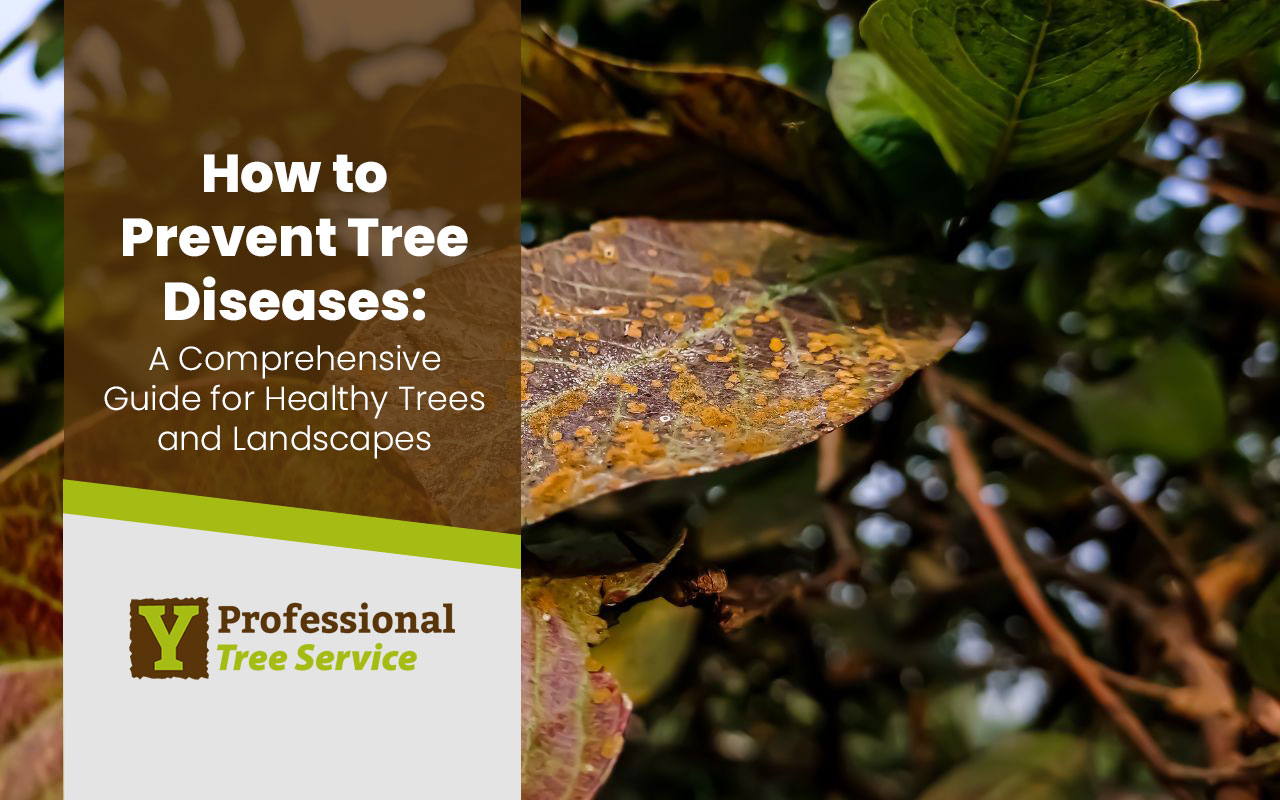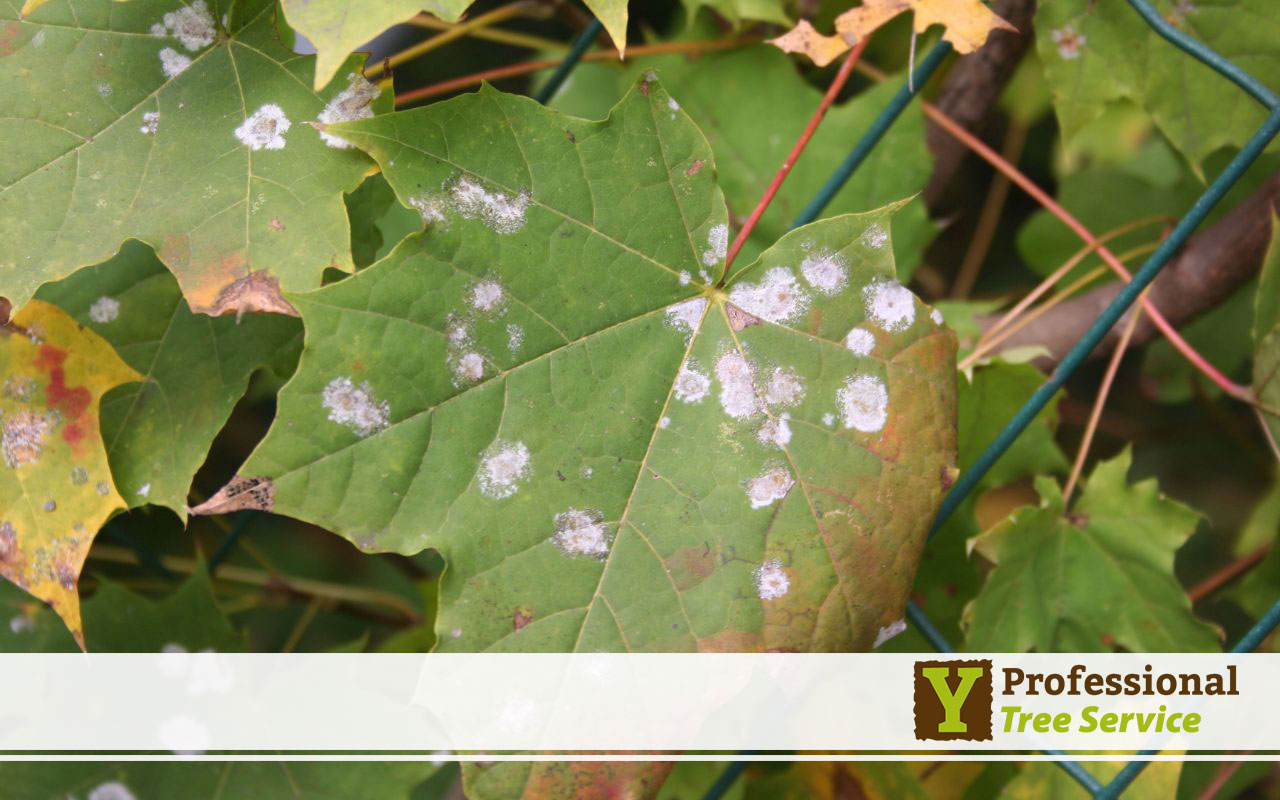
In this Article:
Understanding Common Tree Diseases.
Tips for Preventing Tree Diseases.
Integrated Pest Management (IPM)
Maintaining the health of trees is crucial for preserving the beauty and safety of our landscapes. Tree diseases can lead to unsightly appearances, weakened structures, and even tree death. In this comprehensive guide, we will discuss various strategies on how to prevent tree diseases and ensure the long-term health of your trees.
Understanding Common Tree Diseases
Before diving into prevention methods, it’s essential to familiarize yourself with common tree diseases. Some of these include:
- Root rot: Caused by fungi that thrive in overly wet conditions, root rot can lead to a tree’s decline and eventual death.
- Powdery mildew: This fungal disease appears as a white, powdery substance on leaves and can stunt growth or cause leaf drop.
- Anthracnose: Affecting a wide range of trees, anthracnose causes leaf spots, twig dieback, and defoliation.
- Dutch elm disease: Spread by beetles, this lethal disease affects elm trees and eventually leads to their death.
Environmental Factors and Climate Impact
Understanding your local environment and climate is essential for effective tree disease prevention. Excess moisture makes trees more susceptible to fungal diseases, such as root rot and powdery mildew, in regions with high humidity or frequent rainfall. Conversely, areas prone to drought or extreme heat can stress trees, weakening their natural defenses and making them more vulnerable to diseases and pest infestations. Adapting tree care practices to seasonal and environmental changes can significantly improve tree resilience. For instance, during wet seasons, improve drainage around the root zone to prevent waterlogging. In dry or hot climates, consider adding a layer of mulch around the base to retain moisture and protect roots from extreme temperatures. By adjusting your care methods based on local climate and weather patterns, you create a healthier environment where trees can thrive and resist disease.
Tips for Preventing Tree Diseases
To minimize the risk of tree diseases, follow these tips:
- Plant disease-resistant species
When selecting trees for your landscape, choose species resistant to common diseases in your area. Consult with a local nursery or arborist for recommendations.
- Proper planting and spacing
Plant trees at the appropriate depth and distance from one another to promote healthy root growth and airflow and reduce the likelihood of disease.
- Regular maintenance
Prune trees regularly to remove dead, diseased, or damaged branches. This promotes overall tree health and reduces the spread of disease.
- Soil care
Maintaining proper soil health through nutrient management, pH balancing, and adequate drainage creates an environment where trees can thrive.
- Monitor and inspect
Regularly inspect your trees for signs of disease, such as discolored leaves, wilting, or unusual growths. Early detection and intervention can often prevent the spread of disease and minimize damage. 
Watering Practices
Proper watering practices are key to preventing tree diseases and promoting strong, resilient trees. Both over-watering and under-watering can stress trees, making them more susceptible to infections, pests, and root diseases.
- Avoid Over-Watering: Excessive watering can lead to waterlogged soil, which deprives roots of oxygen and creates ideal conditions for fungal diseases like root rot. To prevent this, water trees deeply but infrequently, allowing the soil to dry out slightly between waterings.
- Watering Schedule: Adjust your watering schedule based on the season and weather conditions. During hot, dry months, trees may need more frequent watering, while in rainy or cooler seasons, reduce watering to avoid oversaturating the soil.
- Targeted Watering Technique: Focus water directly at the tree’s root zone rather than the trunk to encourage roots to grow deep into the soil, providing better anchorage and nutrient absorption. Drip irrigation systems are effective for slow, deep watering that reduces runoff and minimizes moisture around the trunk, where disease can easily take hold.
- Time of Day: The best time to water trees is early in the morning. This allows water to soak into the soil before the day’s heat evaporates, helping maximize moisture retention and giving trees the hydration needed to combat stress and disease.
By tailoring your watering practices to the specific needs of your trees, you help create an environment that encourages healthy growth while reducing the risk of disease.
Mulching Benefits
Mulching is an effective, low-maintenance way to protect trees and boost their overall health, especially during harsh weather conditions. A proper layer of mulch around the base of a tree offers numerous benefits that help prevent diseases and promote strong growth.
- Temperature Regulation: Mulch acts as an insulating layer, protecting tree roots from extreme temperature fluctuations. This is especially beneficial during hot summer months and frosty winter days, helping trees withstand seasonal stress.
- Moisture Retention: Mulch keeps the soil moist for longer periods by reducing evaporation, which is essential during dry spells. Consistent moisture around the roots strengthens trees and minimizes the risk of diseases caused by water stress.
- Weed Prevention: Mulch suppresses the growth of weeds around the base of the tree, reducing competition for nutrients and water. By limiting weed growth, mulch also minimizes the need for herbicides, which can sometimes harm tree health.
- Disease Prevention: A layer of mulch serves as a barrier, preventing soil-borne diseases from splashing onto the lower branches and leaves during heavy rains. This simple step can help reduce the spread of fungal infections.
- Application Tips: Spread mulch in a 2- to 4-inch layer around the tree base, keeping it a few inches away from the trunk. Avoid piling mulch directly against the trunk, as this can trap moisture and promote rot.
By adding mulch to your tree care routine, you support a healthier root system, conserve moisture, and create a protective shield against environmental stress and disease.
Integrated Pest Management (IPM)
Integrated Pest Management (IPM) is a holistic approach to managing pests and diseases in your landscape. IPM involves:
- Monitoring: Regularly inspect your trees and surrounding landscape for signs of pests or disease.
- Identification: Accurately identify the specific pest or disease affecting your trees to determine the most effective control measures.
- Thresholds: Establish acceptable levels of pest or disease presence before taking action, as some level of damage may be tolerable without causing long-term harm.
- Control methods: Combine cultural, biological, and chemical control methods to manage pests and diseases while minimizing harm to the environment and non-target organisms.
Protect Your Trees and Preserve Your Landscape
Preventing tree diseases is essential for maintaining a vibrant, healthy landscape that adds beauty, value, and safety to your property. By understanding common tree diseases, considering environmental factors, and adopting best practices like proper watering, soil care, and mulching, you’re setting your trees up for long-term success. Regular inspections and early intervention can make a huge difference in catching issues before they spread. If you need expert guidance or hands-on help, reach out to us. Our team is here to support you with professional tree care, from disease prevention to maintenance, so your trees remain strong and healthy for years to come.
